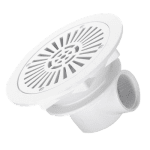Swimming pool changing room design
Designing an efficient and welcoming changing room for a swimming pool is essential to ensure the comfort, privacy, and convenience of users. Whether for a residential pool, a community center, or a commercial facility, a well-planned changing room enhances the overall experience and promotes hygiene and safety. Here’s a comprehensive guide to designing a swimming pool changing room, covering layout considerations, essential features, materials, and practical tips to create a functional and inviting space.
Layout and Spatial Planning (Swimming pool changing room design)
- Separate Areas for Privacy: (Swimming pool changing room design)
- Entrance and Transition Zone: Provide a dedicated entrance area where users can transition from outdoor to indoor environments. This zone may include benches or seating for putting on and removing footwear.
- Changing Cubicles: Arrange individual changing cubicles or stalls to ensure privacy while changing clothes. Cubicles should be spacious enough to accommodate users comfortably and equipped with hooks or shelves for personal belongings.
- Separate Showers: Include separate shower stalls equipped with adjustable temperature controls and sufficient space for users to shower before and after swimming.
- Accessibility and Flow:
- ADA Compliance: Ensure accessibility for individuals with disabilities by incorporating accessible changing spaces, grab bars, and adequate maneuvering space.
- Smooth Traffic Flow: Design the layout to facilitate smooth traffic flow, minimizing congestion during peak times. Clear signage and intuitive layout help users navigate the changing room effortlessly.
Essential Features and Fixtures (Swimming pool changing room design)
- Ventilation and Air Quality: (Swimming pool changing room design)
- Ventilation System: Install a robust ventilation system to maintain fresh air circulation and prevent moisture buildup, which helps control humidity and odors.
- Exhaust Fans: Place exhaust fans strategically to enhance air quality and promote drying of wet clothing and towels.
- Lighting:
- Natural Light: Maximize natural light where possible to create a bright and welcoming atmosphere. Consider privacy screens or frosted glass for areas requiring more discretion.
- Artificial Lighting: Supplement natural light with energy-efficient LED fixtures to ensure adequate illumination throughout the changing room, including cubicles, shower areas, and mirrors.
- Storage Solutions:
- Lockers: Provide secure locker facilities for users to store personal belongings safely while swimming. Lockers should be durable, easily accessible, and ideally ventilated to prevent odors.
- Bench Seating: Incorporate benches or seating areas within the changing cubicles and near lockers for convenience while changing or waiting.
- Hygiene Stations:
- Handwashing Facilities: Install sinks with running water, soap dispensers, and hand dryers or paper towel dispensers for hygiene maintenance.
- Sanitary Disposal: Include bins for the disposal of sanitary products, towels, and other waste materials.
- Design and Décor:
- Durable Materials: Choose materials that are water-resistant, easy to clean, and resistant to mold and mildew. Options include ceramic tiles, vinyl flooring, and moisture-resistant paint.
- Color Scheme: Select a color scheme that promotes a sense of cleanliness and relaxation. Light and neutral tones create a spacious and airy feel, while accents of color can add vibrancy and interest.
Privacy and Security (Swimming pool changing room design)
- Privacy Screens: Use partitions or screens between changing cubicles and shower areas to enhance privacy for users.
- Security Measures: Implement security measures such as CCTV cameras, emergency call buttons, and staff monitoring to ensure user safety and deter unauthorized access.
Maintenance and Sustainability (Swimming pool changing room design)
- Easy Maintenance: Design the changing room layout and choose materials that facilitate easy cleaning and maintenance. Regular cleaning schedules and procedures should be established to uphold hygiene standards.
- Water and Energy Efficiency: Install water-saving fixtures, such as low-flow showers and faucets, to conserve resources. Use energy-efficient lighting and ventilation systems to reduce operational costs and environmental impact.
Designing a swimming pool changing room is an essential aspect of creating a functional and comfortable pool area. These spaces not only provide privacy for guests but also enhance the overall swimming experience. Here’s a comprehensive guide to designing an effective and aesthetically pleasing changing room for your swimming pool.
1. Purpose and Layout (Swimming pool changing room design)
The primary purpose of a changing room is to offer a space for swimmers to change clothes and store personal belongings. Begin by considering the layout, ensuring it accommodates various activities such as changing, showering, and storage. The ideal design includes separate areas for changing and showering, as well as lockers or benches for convenience.
2. Space Requirements (Swimming pool changing room design)
When designing your changing room, aim for a minimum size of 100 to 200 square feet, depending on the number of users you expect. Ensure there is adequate space to move comfortably, with designated areas for each function. For larger facilities, consider multiple changing rooms to minimize wait times during peak hours.
3. Accessibility (Swimming pool changing room design)
Incorporating accessibility features is crucial for inclusivity. Ensure that your changing room is compliant with local building codes and regulations for individuals with disabilities. This may include wider doors, grab bars, accessible showers, and benches at appropriate heights.
4. Privacy (Swimming pool changing room design)
Privacy is a top concern in changing rooms. Use partitioned areas or curtains to separate changing spaces. Additionally, consider soundproofing materials to reduce noise from the pool area and ensure that users feel secure.
5. Ventilation and Lighting (Swimming pool changing room design)
Proper ventilation is essential for maintaining a comfortable environment and preventing mold growth. Incorporate windows, exhaust fans, or air conditioning systems to keep the air fresh. Lighting is equally important; opt for bright, even lighting to help users see clearly while changing. Soft, ambient lighting can create a relaxing atmosphere, particularly in shower areas.
6. Flooring and Wall Materials
Choose durable, water-resistant materials for flooring and walls. Non-slip tiles are ideal for wet areas, while vinyl or laminate flooring can provide comfort and easy maintenance. For walls, consider waterproof paints or tiles that can withstand moisture and are easy to clean.
7. Storage Solutions
Integrate storage solutions such as lockers, shelves, and hooks to keep the space organized. Lockers can provide a secure place for guests to store their belongings, while shelves can hold towels and personal items. Hooks for swimsuits and bags will also help keep the area tidy.
8. Amenities
Enhancing the changing room with additional amenities can significantly improve user experience. Consider installing showers with hot and cold water, hand dryers, and mirrors. Providing seating areas, such as benches or chairs, will give users a comfortable space to relax while changing.
Conclusion (Swimming pool changing room design)
Designing a swimming pool changing room requires thoughtful planning to create a space that balances functionality, comfort, privacy, and aesthetics. By focusing on layout efficiency, essential features like ventilation and lighting, and user comfort through thoughtful design elements and materials, you can ensure that the changing room enhances the overall swimming pool experience. Whether designing for a residential setting or a large-scale commercial facility, prioritizing user needs and adhering to best practices in design and hygiene will contribute to a positive and enjoyable experience for all pool users.


















